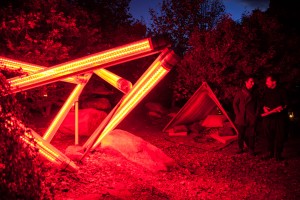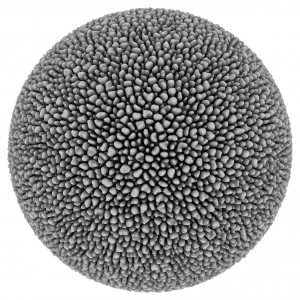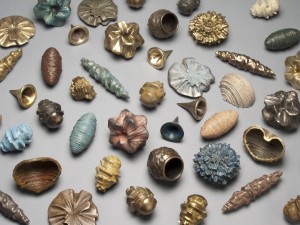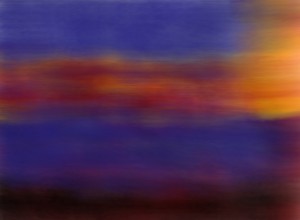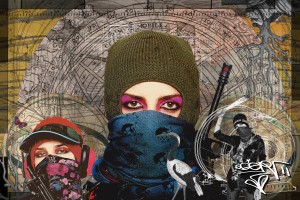MWX is the exhibition initiative of Museums and the Web. This annual exhibition represents work by contemporary artists engaging with the creative technology community through various non-conventional ways and means. This year’s MWX exhibition is curated by Rex Bruce, founder and director of Los Angeles Center for Digital Art (LACDA).
Part of the exhibition will be shown at the Registration Foyer and Exhibit Hall at the Conference Hotel. The other part of the exhibition will be shown at LACDA.
Curator’s notes from Rex Bruce
During my twelve years serving as director at Los Angeles Center for Digital Art so many hundreds of times I’ve been asked, “How would you define digital art?” Or even more starkly, “What is digital art?” My immediate inner reaction is to be repelled by anything so adjacent to the long forgotten question, “What is (or is not) art?” But, given a moment to reflect, knowing what digital art “is” unfolds a familiar narrative I’ve often found useful as fodder for rumination.
First and foremost is the data; anything that is construed by reconstituting binary numbers into “art”, is of course “digital art.” This data can be generated in real time or not, statistically, mathematically, virtually, optically, interactively by input device, or as an appropriated sample or scan. Then, through a vast array of software available (or programmed by the artist) we further manipulate, animate, and edit to realize the final form the zeros and ones take.
The various forms of data generate the file. Ad nauseam we juggle the alphabet soup of filetypes—the PSD, wav, mov, jpeg, and STL. The file requires the player, so the parade of wide format ink jets, DVDs, projectors, tablets, smart phones, and 3D printers passes by, forever renewed like a snake eating itself in the endless cycle of obsolescence and upgrades.
The files disseminate and replicate in the networks. And, of course as is germane to this conference, the files are experienced on the web. It seems as if the time we spend browsing the internet outpaces our analog experience of the world. The culture of the web indeed may have outpaced all cultural forms around the globe. The discursive arenas of Facebook, Instagram, Twitter, and YouTube abound, traveling from our desktops to our phones. We nervously wait for it all to be piped directly into our heads as we ponder the possibilities of personal dysphoria and worldwide dystopia.
This same ether finds itself spilling into the LACDA, shattered under the hammer of creative imagination and stirred with a generous helping of the pro-social. Variously it reifies in a frontier of aestheticized glitches, gadgets, viewers, sensors and adulterated hardware.
The politely constrained mathematical forms of Andy Lomas mimic the biological in the most artificial way. Politically motivated datasets transform into the robotically carved sculpture of Mary Neubauer, and in her collaborations with composer Todd Ingalls web data informs sculpture in real time with the added element of interactive sound. 3D printed dresses express sentiments of Tiffany Trenda’s technologized feminism, her pulse is compared with yours and QR codes we scan from her skin tight costume link us to websites containing information about related body parts. Assembly of real-world objects with data manifest in the midi-controlled light sculptures of Adrian Sierra Garcia where the helm is handed over from the artist to the viewer. Augmented reality overlays the iPad paintings of Daniel Leighton, as his personal narrative is composed with a surprising display of video, animation and sound. The L.A. Art Collective beckons us to tweet directly into their large scale videos, removing a layer of the didactic by letting us individually contribute to their exploration of social issues.
If nothing else, LACDA is a place where an anarchy of outré variety is the house rule, which certainly applies to the handful of artists selected for MWX 2016. Their zeros and ones are materialized for us here, creating some shine in our very own Los Angeles—the place where all things glittery or gold are blasted to the four corners of the earth.
Los Angeles Center For Digital Art is dedicated to the propagation of all forms of digital art and the vast panorama of hybrid forms of art and technology that constitute our moment in culture. We are committed to supporting local, international, emerging and established artists through exposure in our gallery. We have an ongoing schedule of exhibits and competitions, produce editions of wide format archival prints, and collaborate in the production of digital artworks in our studio. As well we are engaged in curating digital exhibits at institutions, conferences and festivals outside of the LACDA gallery schedule.
Rex Bruce is the founder and director of Los Angeles Center for Digital Art. He founded the digital program at Artists Television Access in San Francisco for which he curated exhibits and created curriculum. He received his masters from San Francisco State University in Interdisciplinary Art where he also taught and developed curriculum for many years. Known for having organized hundreds of exhibits, performances, musical events, guerrilla happenings, and screenings, Rex Bruce has been active in computer related arts since the early 1980’s. Most recently he has emerged as a significant organizer in burgeoning downtown Los Angeles as well as becoming a leader in the growing international scene revolving around art and technology.

